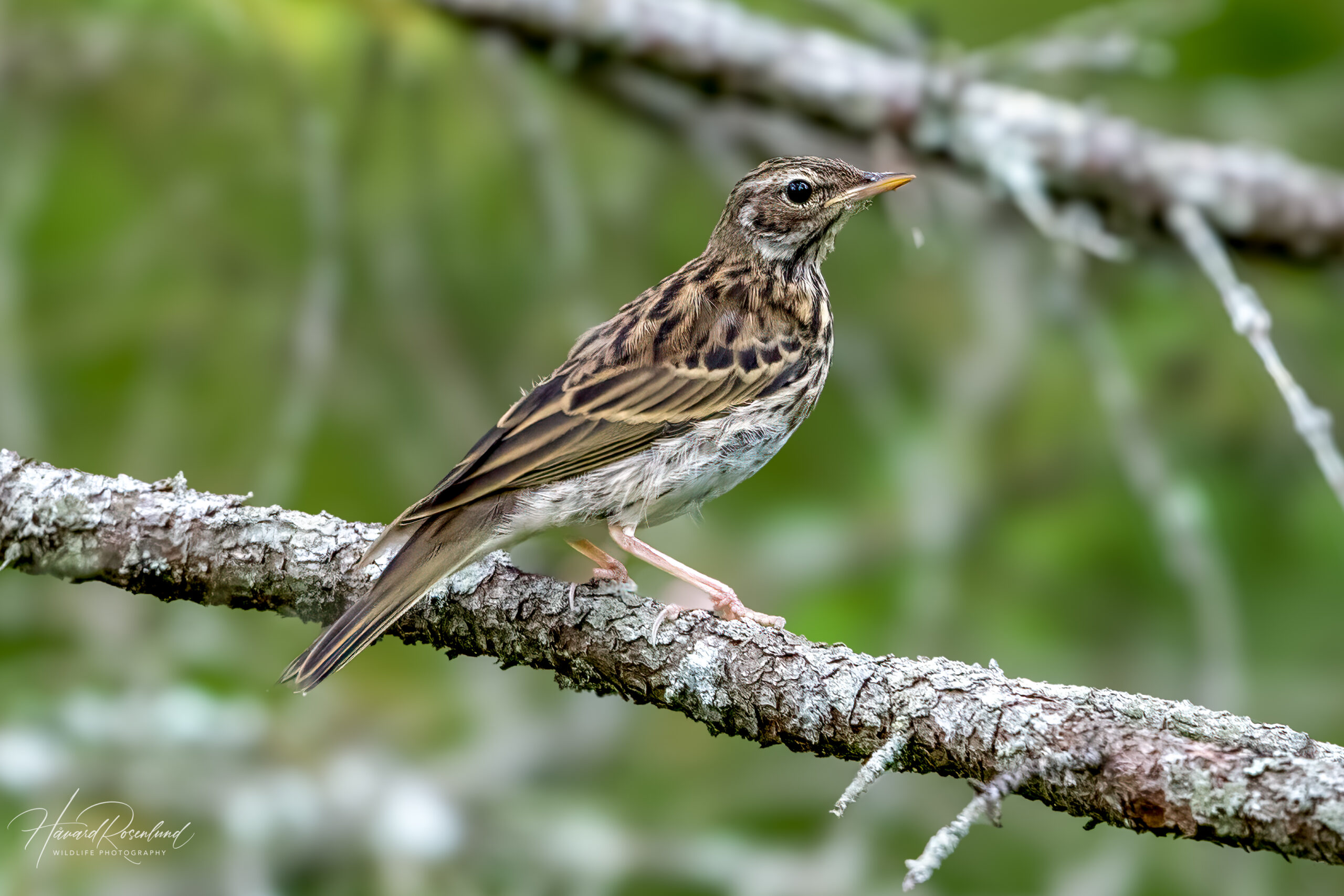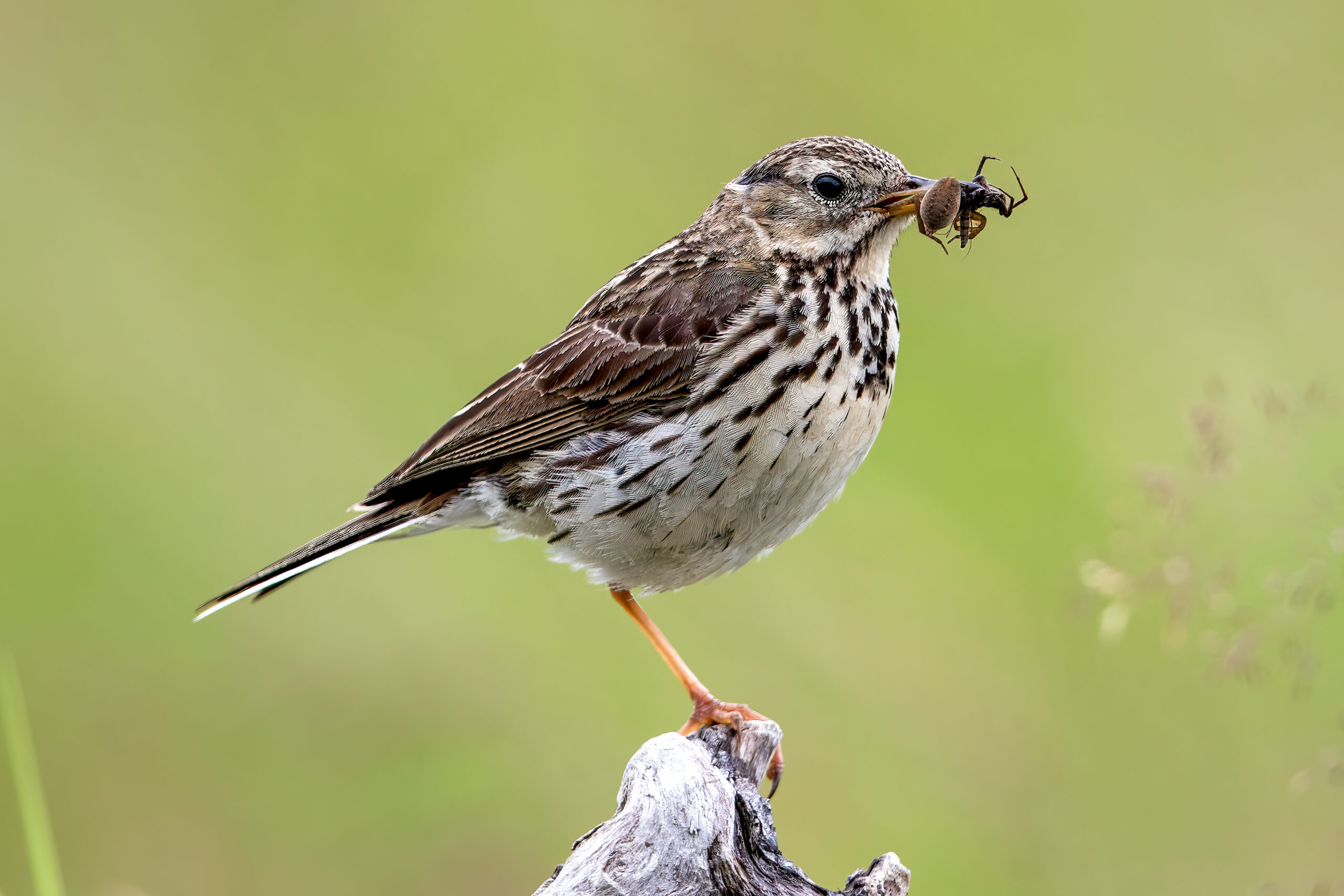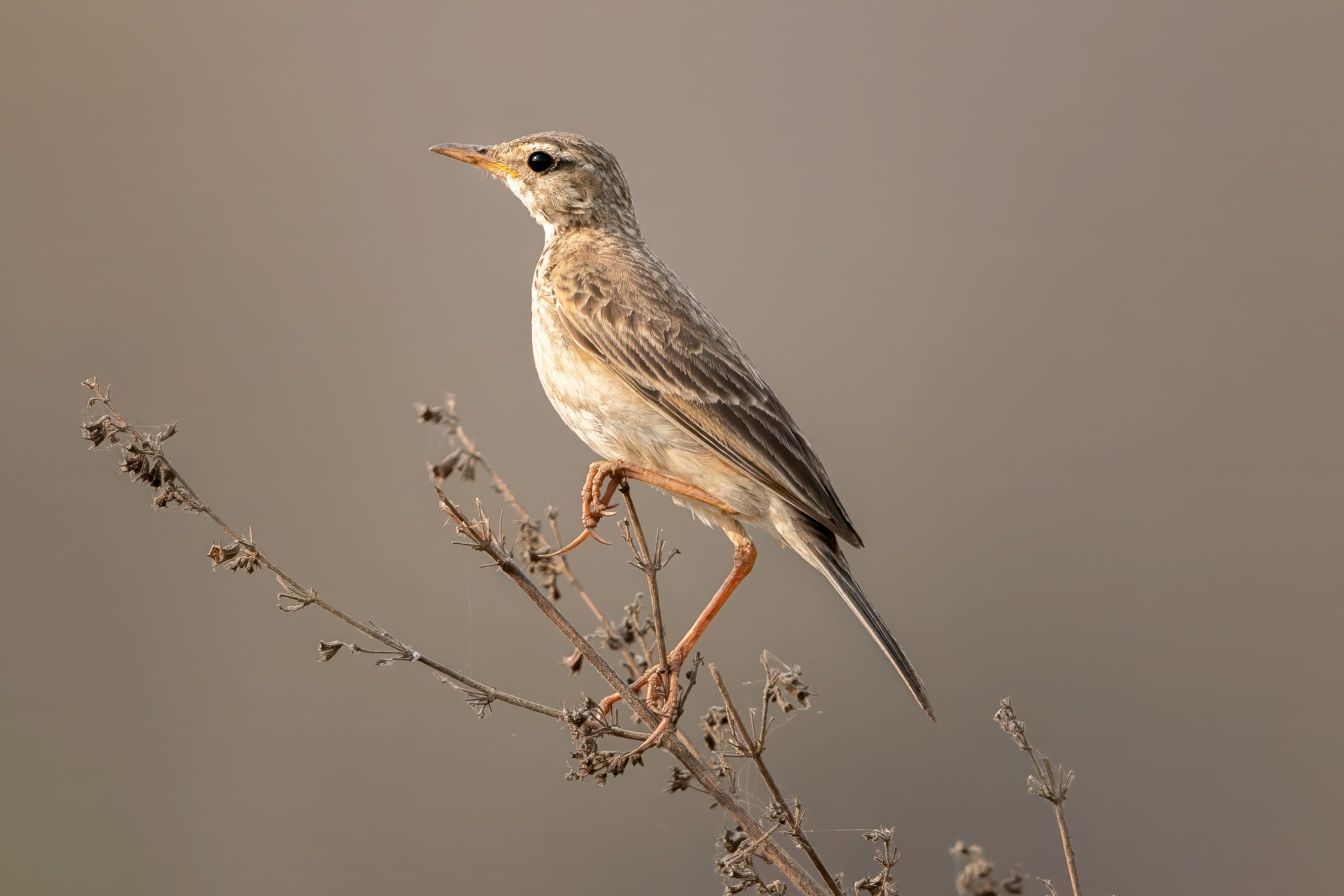Description
The tree pipit (Anthus trivialis) is a small passerine bird that breeds across most of Europe and northern Asia, and winters in sub-Saharan Africa and India. It measures about 14-15 cm (5.5-5.9 in) in length and weighs approximately 15-39 grams (0.5-1.4 oz). The species has olive-brown upperparts and white underparts with streaking on its breast and flanks. Its bill is thin and dark, and it has pale legs.
The tree pipit can be distinguished from the similar meadow pipit (Anthus pratensis) by its slightly larger size, heavier bill, and a more buff chest contrasting with a white belly. It is found more often in forested habitats, where it is readily seen perched in trees (the meadow pipit is typically seen less in trees). The tree pipit also has a more powerful, slightly curved hind claw and shows more contrast in its wing pattern during flight. Its song is also a distinguishing factor, often delivered in a parachuting flight display, with a distinctive and melodious series of phrases that ends with a trill
Diet & habitat
The tree pipit is found in open woodland areas, forest edges, and clearings. They prefer habitats with scattered trees, avoiding denser forests and very open areas alike. Their diet mainly consists of insects and other small invertebrates, which they forage for on the ground. During the breeding season, they may also catch insects in flight, displaying a more varied hunting technique.
Migration
Tree pipits are migratory birds, spending the breeding season in their European and northern Asian range before migrating to sub-Saharan Africa and India for the winter. Their migration is notable for its length, covering thousands of kilometers twice a year. They typically migrate during the night, using stars for navigation. They leave their breeding ground and travel south in August-September, and arrive back north to breed in April-May.
Nesting
The breeding season begins in late spring, when the tree pipit returns to its breeding grounds in April or May. They nest on the ground, often in a well-hidden spot among tall grass or underbrush. The nest is constructed by the female and made of grass, lined with finer materials. She lays 4-6 eggs, which are incubated for about 13-15 days. The fledging period, from hatching to leaving the nest, lasts around 14-16 days. Both parents feed the chicks, although the female does most of the incubation and brooding.
Status
The tree pipit has a wide range and a very large population, presumably numbering more than 100,000,000 mature individuals. It is listed as least concern on the IUCN Red List. However, like many migratory birds, it is susceptible to habitat loss and degradation both in its breeding and wintering ranges, as well as threats from pesticide use and climate change, and its numbers are believed to be decreasing.









